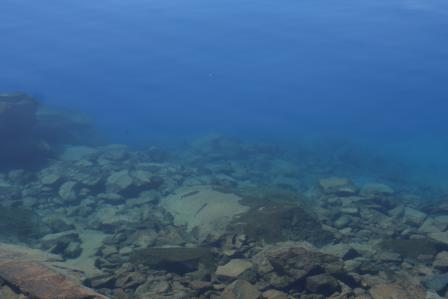Indicators: Water Clarity
What is water clarity?
Water clarity is a measure of how far down light can penetrate through the water column. Clear waters are characterized by low concentrations of suspended soil particles and/or algae, whereas turbid waters are marked by high levels of suspended particles that cloud visibility by absorbing and scattering light. Because water clarity is closely related to light penetration, it has important implications for the diversity and productivity of aquatic life that a system can support. For example, clearer water allows more sunlight to reach submerged aquatic vegetation. The vegetation, in turn, produces oxygen, provides habitat for fish and shellfish and provides food for waterfowl, fish and mammals. Additionally, clear waters are generally valued for aesthetic and recreational purposes. Water clarity can vary naturally due to tides, storm events, wind patterns and changes in sunlight.

Why is it important to evaluate water clarity?
When human activities upstream and in the watershed increase soil erosion and nutrient inputs beyond natural conditions, water clarity can be reduced. In addition to limiting the appeal of waters for swimming and other recreational uses, the sediments and nutrients that reduce clarity can also be harmful to aquatic ecosystems by smothering nearshore habitats, burying benthic communities and changing algal growth patterns.
What can water clarity tell us about the condition of water?
Water clarity provides a visual indication of the condition of water. It is affected by a number of physical, chemical and biological factors that are connected to the natural geology and human use of the surrounding watershed. Some waters are naturally turbid. However, waters that receive excessive inputs of nutrients (such as fertilizer runoff) and sediments (for example, from construction runoff) are generally less clear and more turbid.
